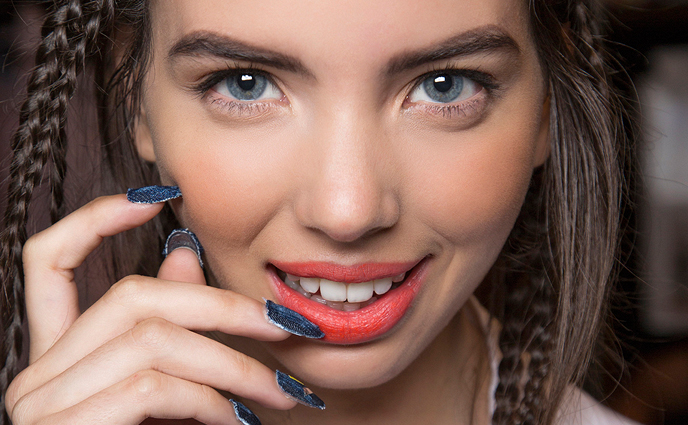How it works: Bleaching treatments at the dentist's office often involve directing a blue LED light at the peroxide gel on your teeth. The light and heat help to lock in the peroxide's whitening oxygens, making them react more quickly, explains Deutch. Professional grade at-home blue light devices have a similar effect. The faster process means less exposure to the gel, making these treatments better suited to sensitive teeth.
What to use: Deutch recommends the Glo Science Glo Brilliant Personal Teeth Whitening Device, $220, which comes with whitening gel that you apply directly onto teeth and a rechargeable light-up mouthpiece that goes over the gel. (A sensitive mouth solution is also included, which you can apply to your lips and gums beforehand). The light-up mouthpiece plugs into a charger that hangs around your neck, as it sits in your mouth for four consecutive eight-minute sessions. Yes, it looks a bit like a futuristic torture device, but used daily, the results are standout.
(If your teeth are ultra-sensitive, Gulizio recommends also prepping for your whitening treatment with an over-the counter teeth desensitizer, such as Dentist On Call SenzAway Tooth Desensitizer Gel, $4.29).
When you'll see results: 5-10 days (when used 32 minutes daily)
How it works: If you're opposed to chemical-infused bleaching treatments and toothpastes, but still want whiter teeth, you might opt for a DIY remedy. "Ingredients with highly acidic content can remove stubborn surface stains, possibly even faster than whitening toothpastes," says Stirneman.
What to use: To create your own at-home whitening solution, Stirneman recommends diluting some apple cider vinegar with water and mixing with an all-natural toothpaste (such as Tom's of Maine Simply White Toothpaste, $4.99). Mix three parts water and one part vinegar with your toothpaste, brush and rinse very well, so none of the acid remains on your teeth.
When you'll see results: Within 3 months
How it works: The key to keeping your teeth sparkling after using any of these treatments is to maintain your whitening routine. Try to cut back on food and drink that cause staining, especially within 24 hours after using a bleaching product, and swish with water after eating or drinking. Coffee addict? Try switching to iced coffee and drinking with a straw. If you're into tea, chug it. "Tea often stains more than coffee, because people tend to hold it in their mouths a lot longer when they drink it," says Deutch.
What to use: Deutch recommends maintaining your oral care by using a whitening fluoride rinse, such as Listerine Healthy White Restoring Anticavity Mouthrinse, $11.79, and cleaning hard-to-reach stains with Oral-B Glide 3D White Whitening Plus Scope Flavor Floss, $3.99.
When you'll see results: Continually




